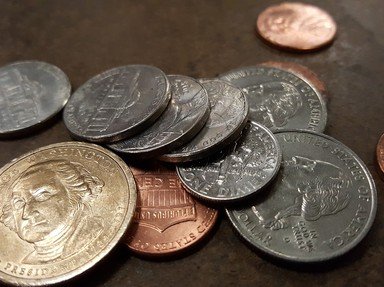Quiz Answer Key and Fun Facts
1. Half Dime (1794-1795), Half Dollar (1794-1795), Dollar (1794-1795)
2. Half Dime (1796-1805), Dime (1796-1807), Quarter Dollar (1796-1807), Half Dollar (1796-1807), Dollar (1795-1804)
3. Half Dime (1829-1837), Dime (1809-1837), Quarter Dollar (1815-1838), Half Dollar (1807-1839)
4. Half Dime (1837-1873), Dime (1837-1891), Quarter Dollar (1838-1891), Half Dollar (1839-1891), Dollar (1840-1873)
5. Dime (1892-1916), Quarter Dollar (1892-1916), Half Dollar (1892-1915)
6. Dime (1916-1945)
7. Quarter Dollar (1916-1930)
8. Half Dollar (1916-1947)
9. Dollar (1878-1921)
10. Dollar (1921-1935)
Source: Author
bernie73
This quiz was reviewed by FunTrivia editor
WesleyCrusher before going online.
Any errors found in FunTrivia content are routinely corrected through our feedback system.
